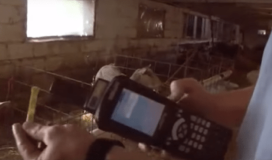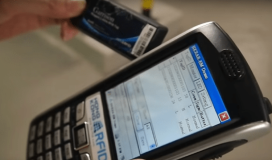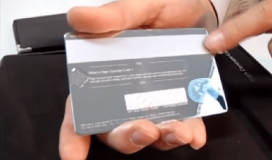NFC, which stands for Near Field Communication, is a set of communication protocols that regulate the data transfer and communication between two devices, one of them being active and the other being passive. The near field communication is essentially a wireless technology that facilitates the data transfer from a small passive chip which is an NFC sticker to an active device powered by battery or electricity to read or write the data stored in the tags NFC. This wireless technology works efficiently within a range of 4cm to 10 cm and requires both the devices to be brought within close proximity of the specified range.
The data stored in the NFC tags can be stored in any form that is either text, audio or video formats depending upon the type of application they are used for, though maintaining the lower amount of data to be stored in them. For instance, the tags NFC can be used to store URL or telephone numbers ranging from 41 to 132 characters depending upon the specification and type of NFC tag used and usually operate at the data transfer rates of 106 kbit/s to 424 kbit/s. Being passive they don’t have operational power of their own instead they run on power took from the active reader device coupled electromagnetically with it. These tags are generally custom-encoded so as to ensure the security of the stored data and can also be equipped with lock features to safeguard the data from being used by unauthorized users.
These days tags NFC are available with different memory capacities and speeds which range from medium, high to very high speeds. For instance, the NTAG213 NFC chip with a memory of 142 bytes offers very high speeds of data transfer and are currently used in many handheld devices like wristbands, keys, stickers and for lot more applications. The NFC tags can be used for number applications at home as well as in offices. For instance, they can be programmed to operate with your smart phones and can be used to turn on the Wi-Fi at your home, change the volume levels of your home stereo system, lock/unlock the doors and control the lighting systems. Nowadays, tags NFC have also found a place in the wallets and are effectively used as electronic business cards at offices to enable personal identification scanning and other official purposes.
With innovations and scientific upgrades being made in the NFC technology, the NFC tags are definitely going to serve a lot more purposes and applications than what they are serving today.



